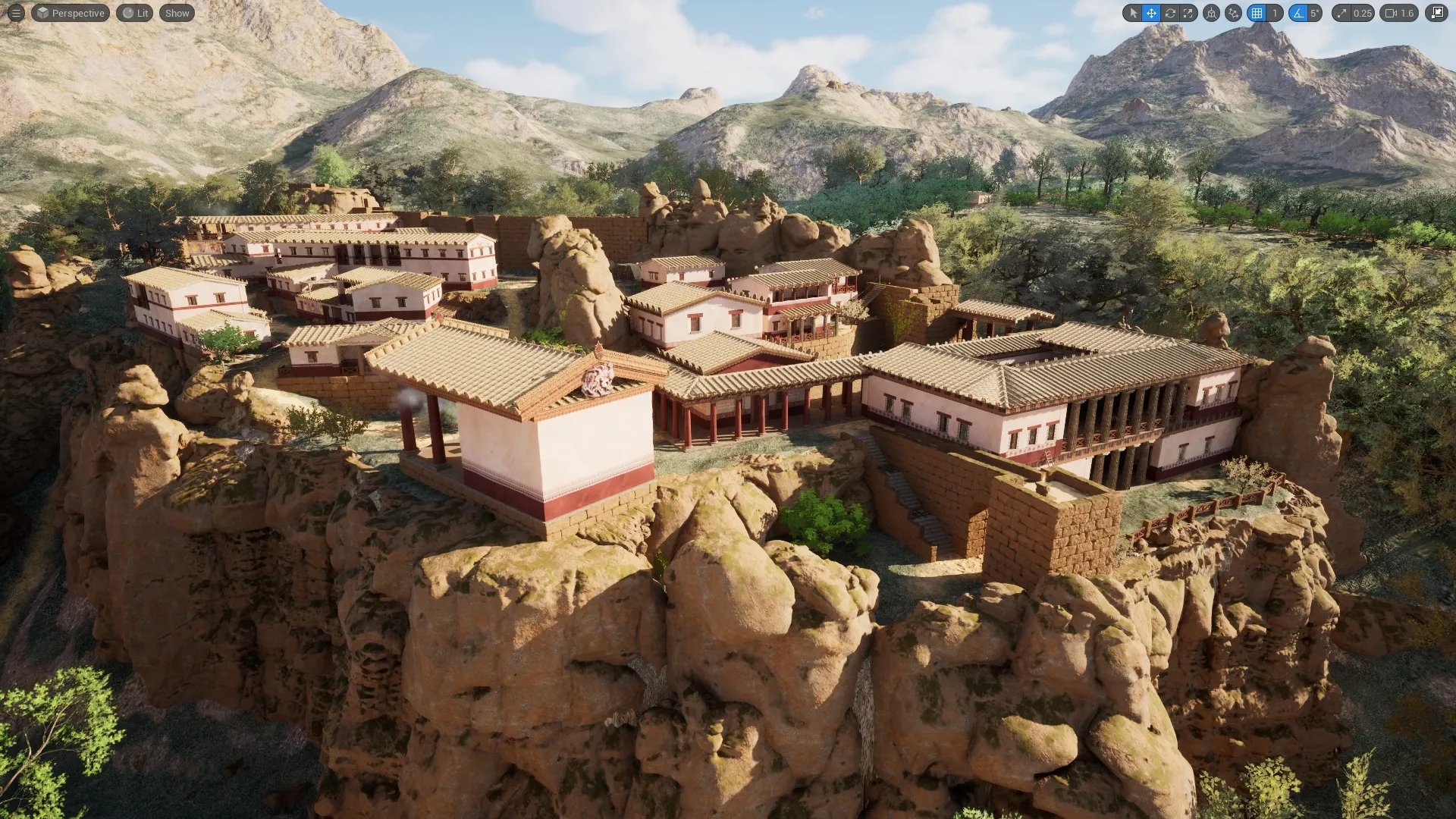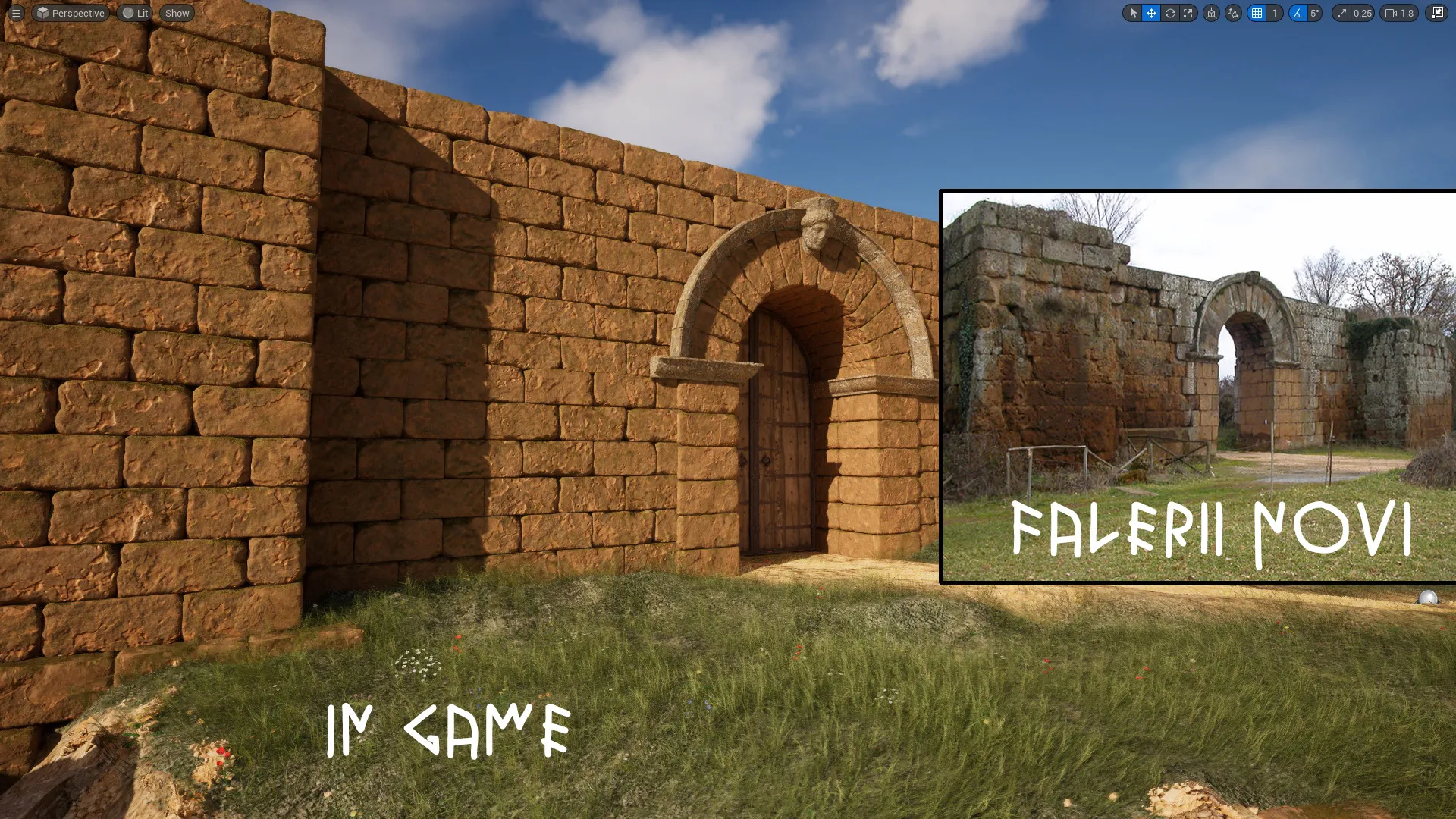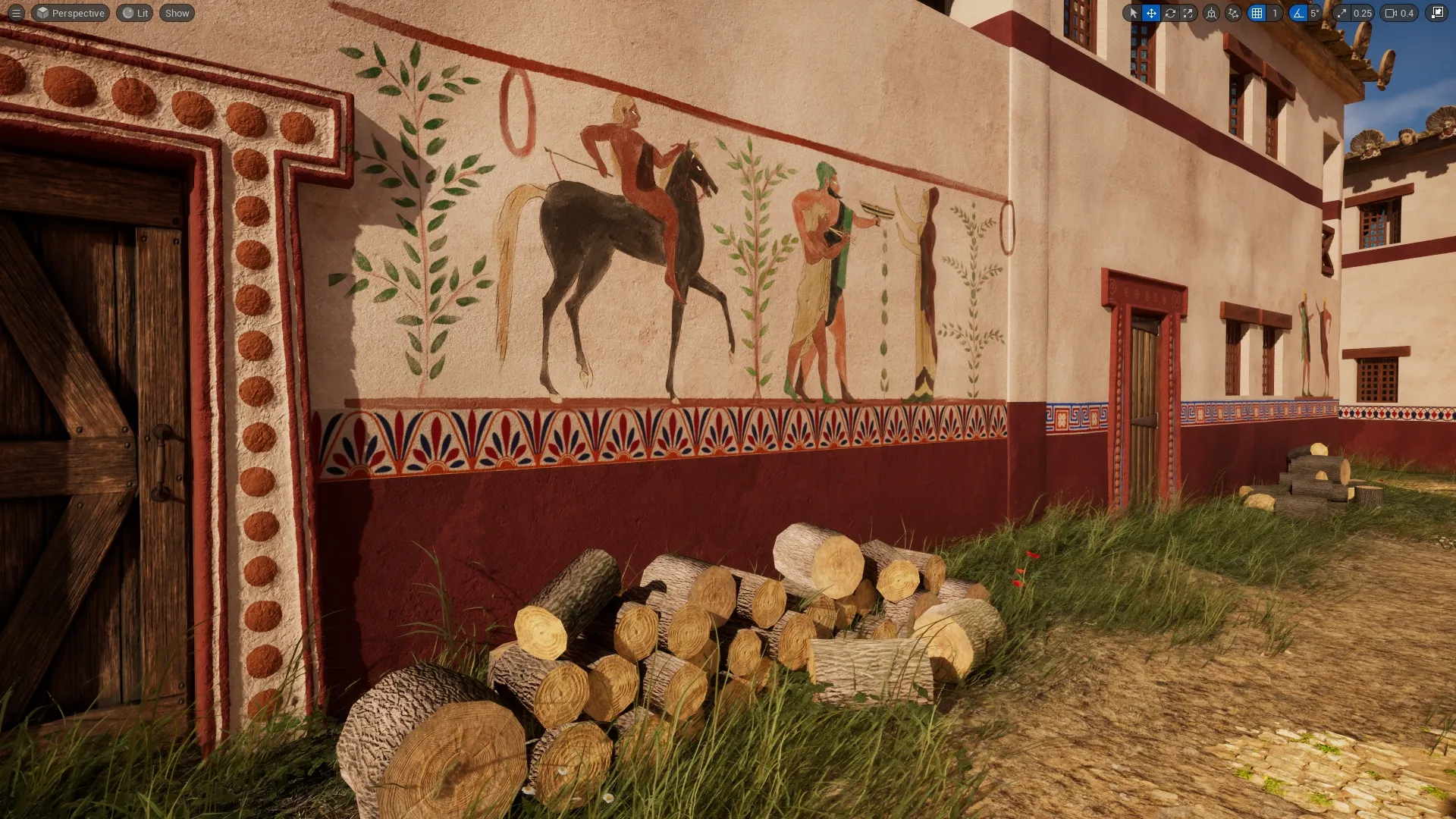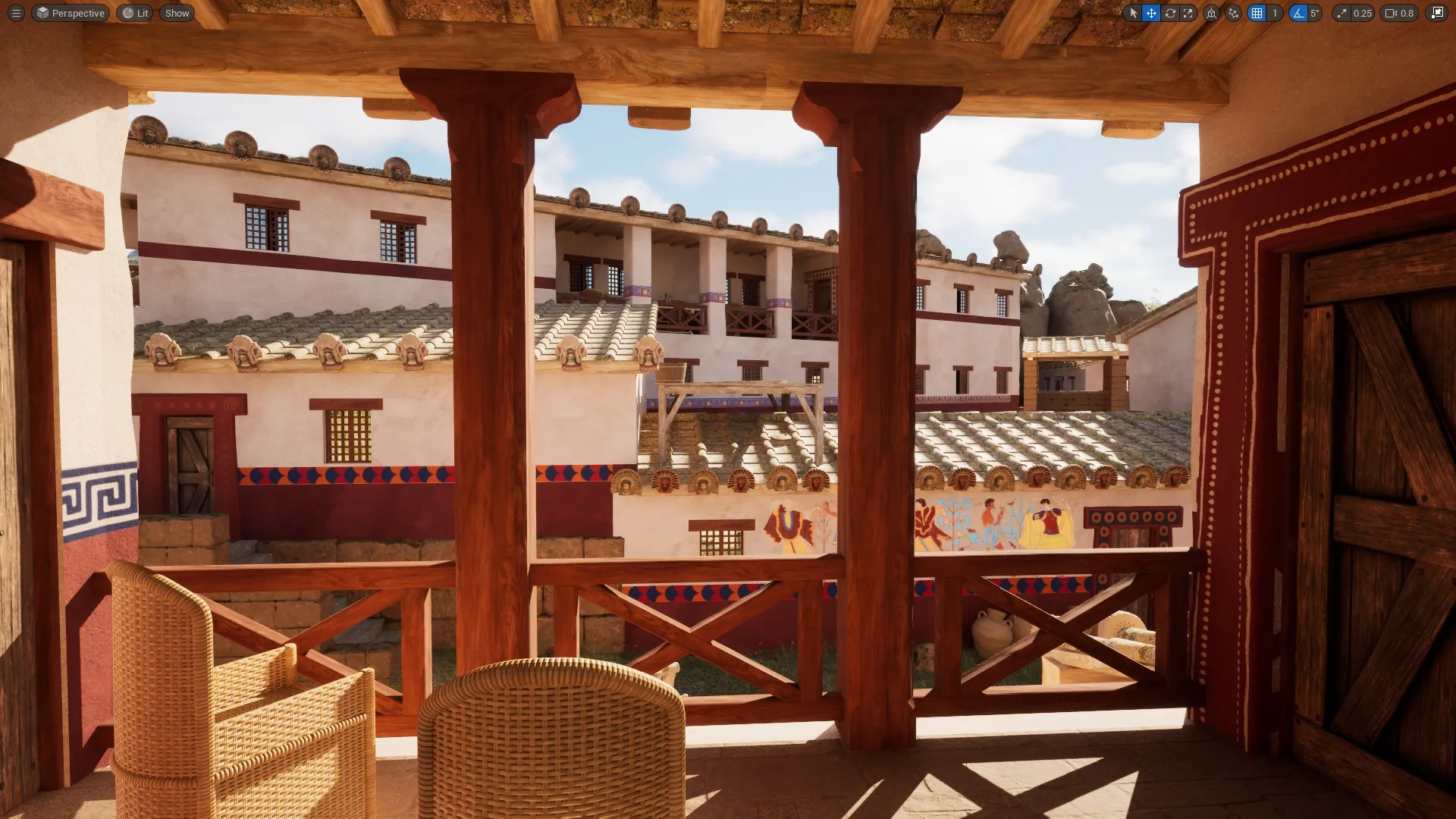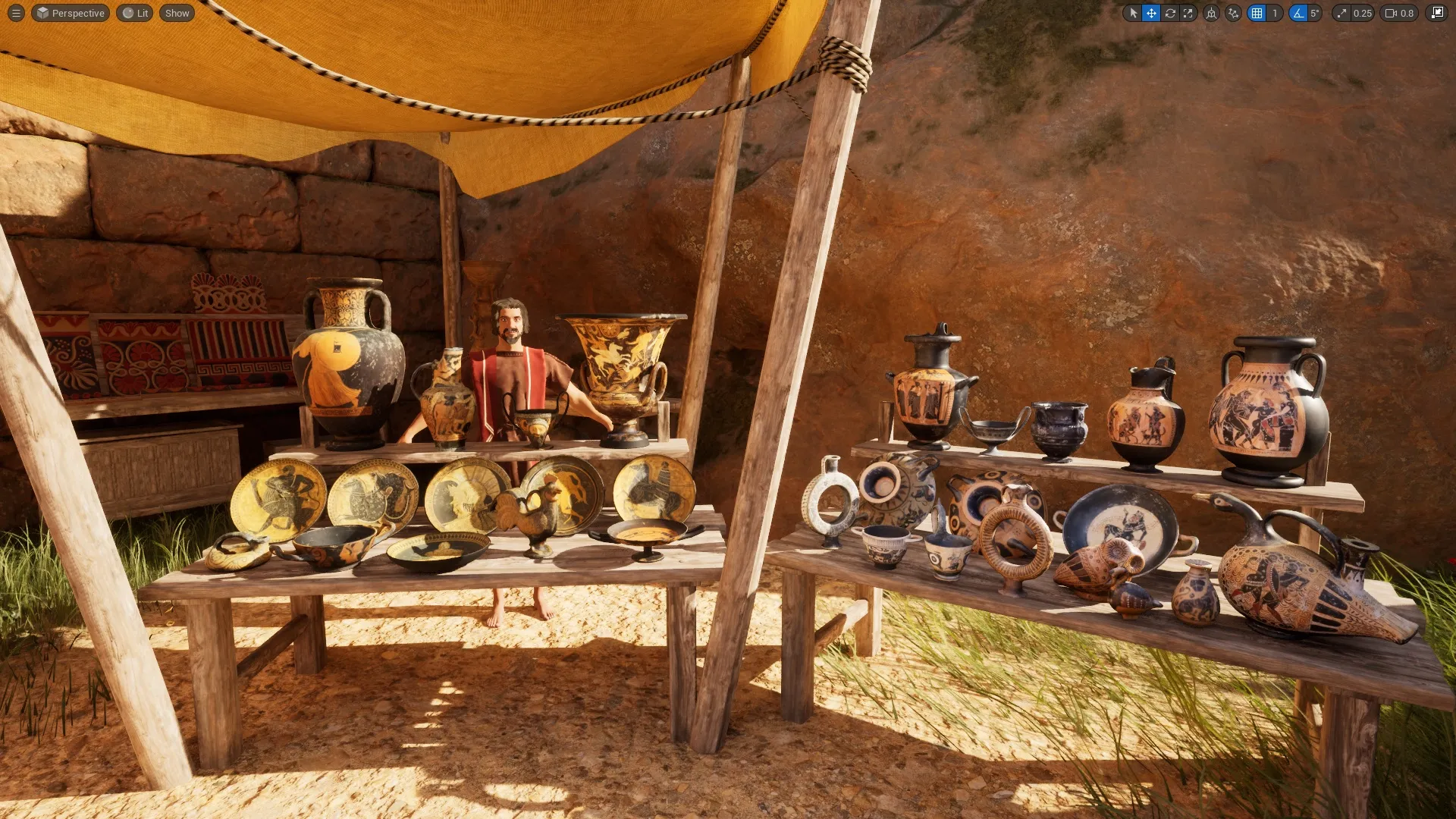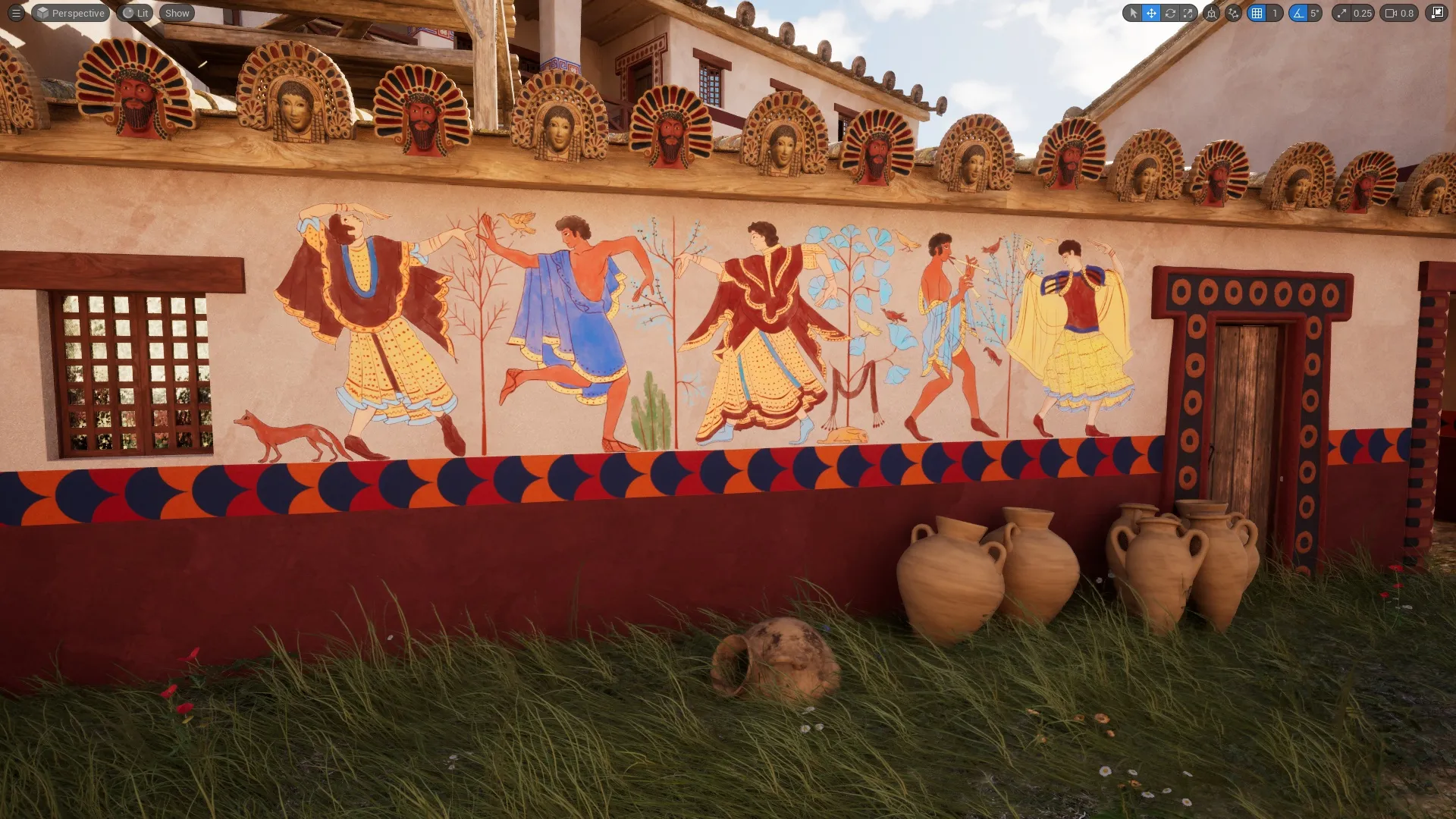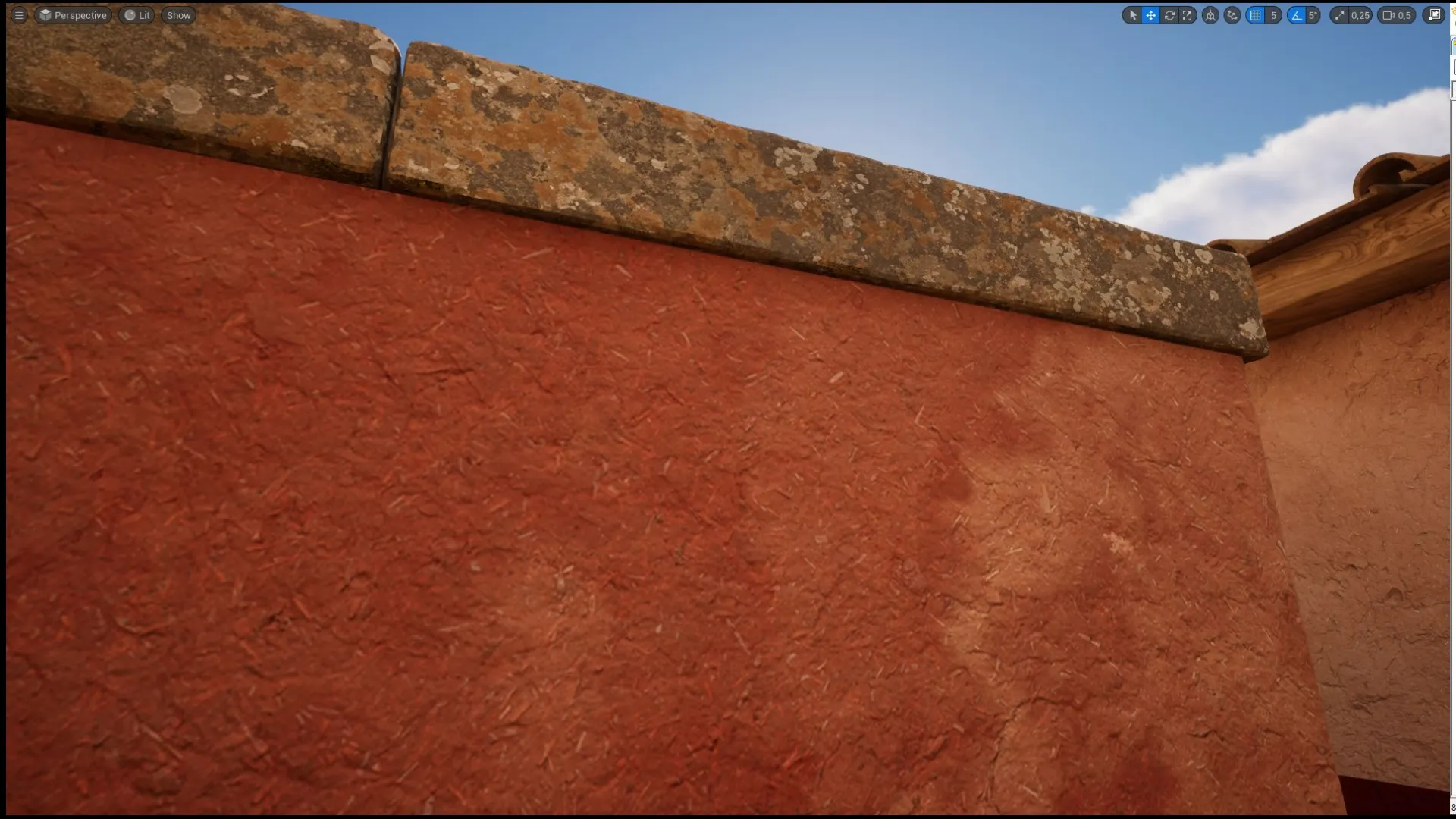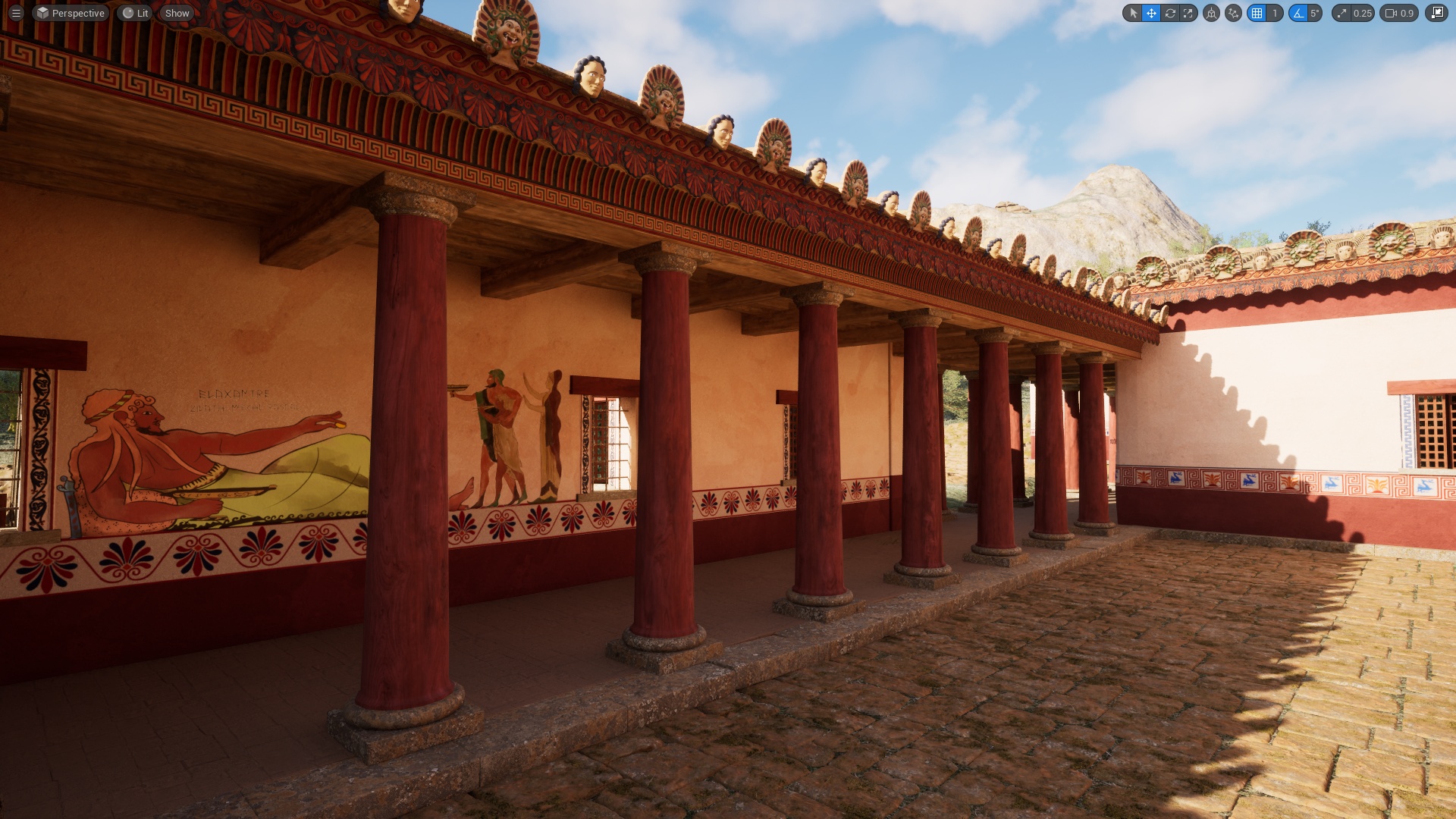
Architecture and Art
For architectural reconstructions, I drew from what is present in major museums and archaeological sites.
The city of Manthura and its main gate are located exactly in the original position, but only few traces of the ancient city remain. The walls of the Etruscan buildings were made of clay and straw, this material doesn't last for long and for this reason we have limited information. However, the Etruscan made large use of terracotta for tiles and decorations: those materials can be now found in museums. For my reconstruction I relied on material from different museums and other archeological sites of the same region.
The city of Manthura was a moderately sized city. To better enjoy the game, the main buildings are those that would have been found in a larger and more important city.
For example, the walls and city gate are modeled after those of Falerii Novi and the Servian walls of Rome. Even the temple appears quite lavish for a town like Manthura and it's inspired by the one in Veii.
Terracotta objects play a pivotal role in Etruscan art and decor – artistic creations that the Etruscans exported all across the Mediterranean. Two highly esteemed artists, Pithos and Masto Cencio, who collaborate with museums worldwide, graciously granted me permission to 3D scan their Etruscan reconstruction works and integrate them into the game. I am extremely grateful to both of them.
I paid particular attention to frescoes too. We actually don't know how frescoes were used in domestic settings, but we found many amazing examples in some necropolises. I took photos of some of the best-preserved frescoes and had an artist, Alessia Fiorentino, redraw them to "take away 2500 years."
